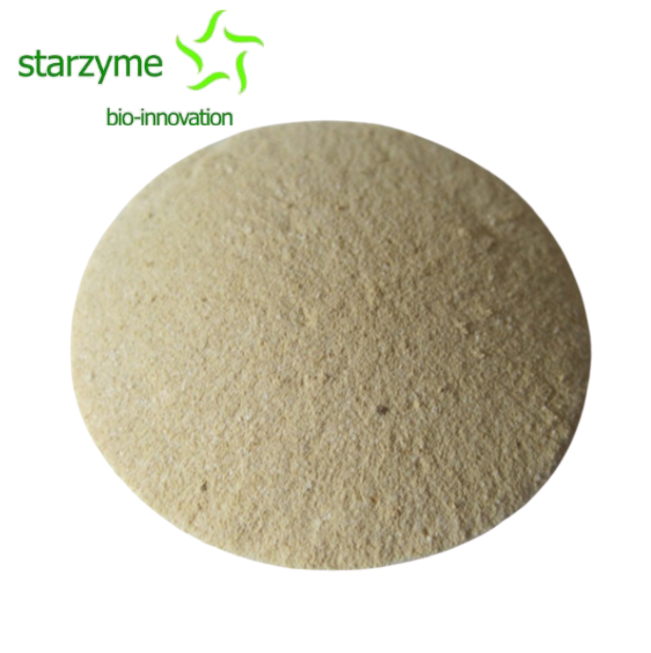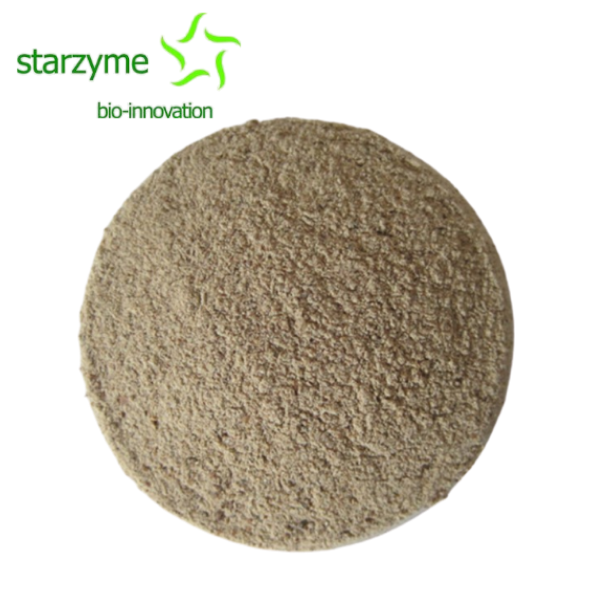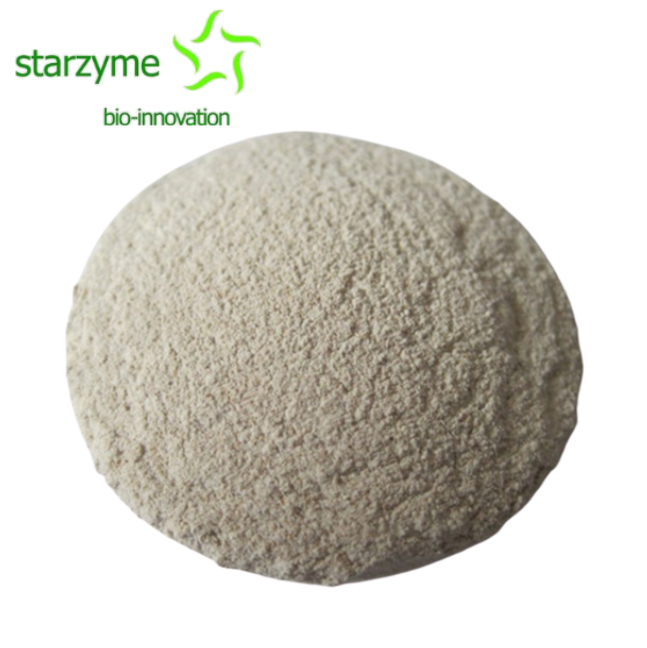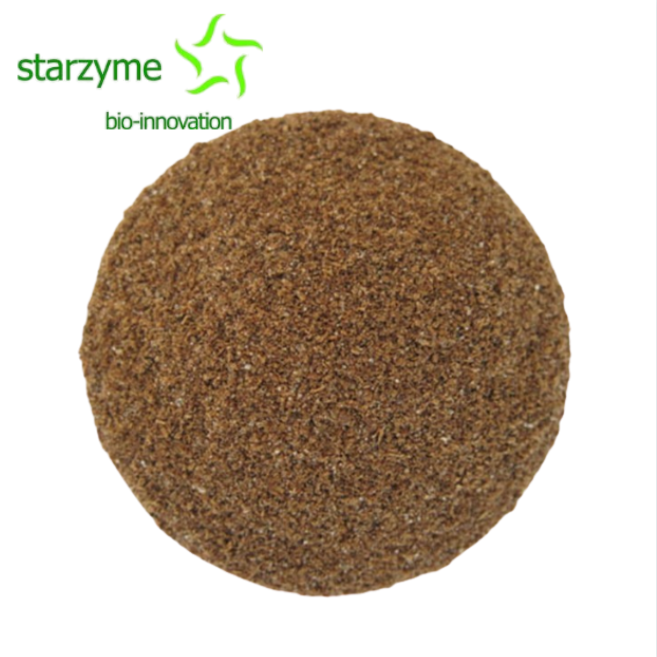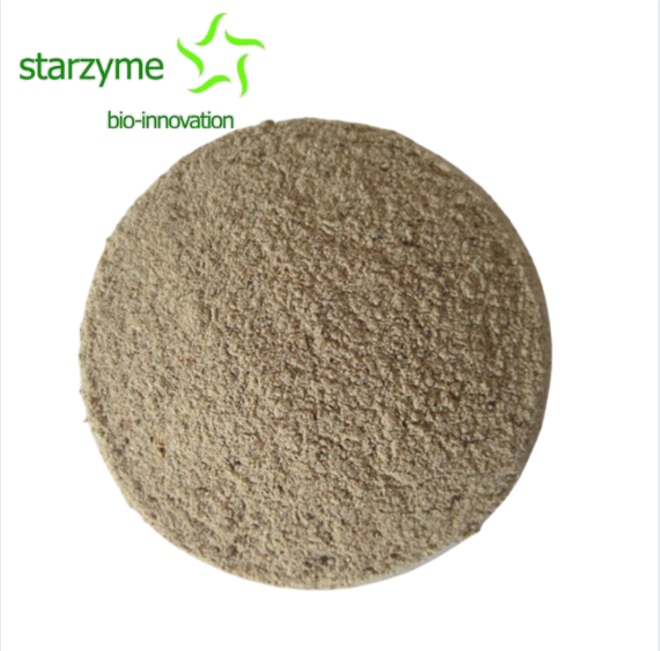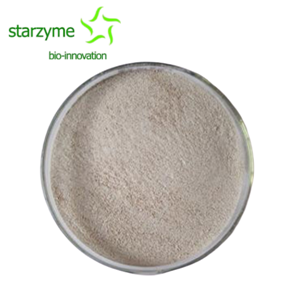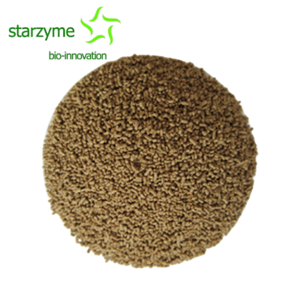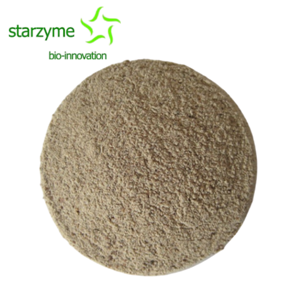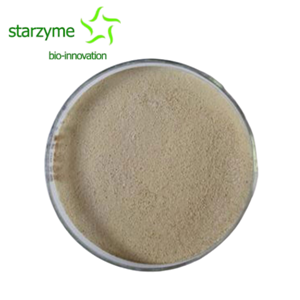Glucoamylase Enzyme

- Starzyme
- China LiaoNing
- Within Two weeks afterreceivedthe order
- 150 Tons Permonth
Glucoamylase is prepared and refined by deep fermentation of Aspergillus niger
1. Glucoamylase appearance: beige powder (solid) or brownish red solution (liquid)
2. The optimal temperature: 60°C
Glucoamylase, also called glucohydrolase, is prepared and refined by deep fermentation of Aspergillus niger. It can hydrolyze α-1,4 - or α-1,6 - glucosidic bond of starch from its non-reducing end to produce glucose. The activity of the enzyme increases as the temperature increases, but from 65°C the activity decreases as the temperature increases.
Features:
1. Appearance: beige powder (solid) or brownish red solution (liquid)
2. The optimal temperature: 60°C
3. The optimal pH: 4.0 -4.5
4. The product standard: meet the National Standard of P.R. China (GB8276-2006)
Definition of the unit of the enzyme activity: One unit (U) is defined as 1 g or 1 ml of the enzyme to hydrolyze soluble starch to produce 1 mg of glucose (pH 4.6) at 40°C in 1 hr.
Applications:
1. In alcohol production, glucoamylase should be added at 80-200 U/g (raw materials) after the temperature of the steamed and boiled raw materials is cooled down to 60°C. The temperature should be maintained for 30-60 min, and then cooled down for fermentation.
2. In amylose production, glucoamylase should be added at 100-300 U/g (raw materials) after the temperature of the liquefied raw materials is cooled down to 60 ⁰C and the pH is adjusted to about 4.5. The temperature should be maintained for saccharification.
3. In dry beer brewing, glucoamylase should be added before saccharification and fermentation.
4. In liquor, rice wine and spirit production, glucoamylase can be used to promote fermentation.
5. In monosodium glutamate, antibiotics and citric acid production, glucoamylase should be added at 100-300 U/g (raw materials) after starch is liquefied, cooled down to 60°C and adjusted to pH 4.5.
Attention:
Since the optimal pH of glucoamylase is 4.0 - 4.5, in the production of amylose and monosodium glutamate, the enzyme should be added after the pH is adjusted. The amount of enzyme supplemented depends upon raw materials and procedures and should be increased in order to shorten the saccharification. The starch raw materials should be in full contact with the enzyme. Large contact area and long period result in good saccharification. Intermittent saccharification needs sufficient mixing, whereas, continuous saccharification needs uniformly flowing. The temperature should be strictly controlled and maintained at 58-60°C, uniform temperature. Higher temperature and short saccharification are strictly prohibited.
Specification:
Solid powder: 50,000 U/g, 100,000 U/g, 200,000 U/g,
Liquid: 50,000 U/ml, 100,000 U/ml, 200,000 U/ml,
Package:
Solid powder: 2 kg/bag, 25 kg/bag,
Liquid: 25 kg/barrel
Storage: store in cool and dry area, and avoid direct exposure to sunlight, rain and moisture.
Shelf time: The enzyme activity meets the National Standard (GB8276-2009).

Analysis on the current pain points of the industry
1. False mark of enzyme activity
The product is marked with 100,000 enzyme activities, and the actual enzyme activity is 60,000, resulting in incomplete hydrolysis and indirectly increasing the cost of enzymes.
2. Product is unstable
Lack of enzyme protection technology and quality control, unstable enzyme activity, and differences in product specifications for each batch, resulting in product quality fluctuations.
3. Long production cycle
No enzymatic hydrolysis experience and enzyme compounding technology increase labor cost and R&D cycle, which indirectly affects the production schedule.
For us, our major is to solve these pain points
1. The enzyme activity can be customized, providing different enzyme activity products and solutions
2. Stable enzyme activity, unique enzyme activity protection technology to reduce fluctuations in production quality
3. Enzyme activity is not false, strict quality control links, third-party testing to reduce enzyme costs
Quality control strength
6 key control point inspections, escorting the whole process of quality, using extraction, membrane separation, vacuum freeze-drying, spray drying and enzyme activity protection technologies to produce products that fully meet the requirements of global customers.
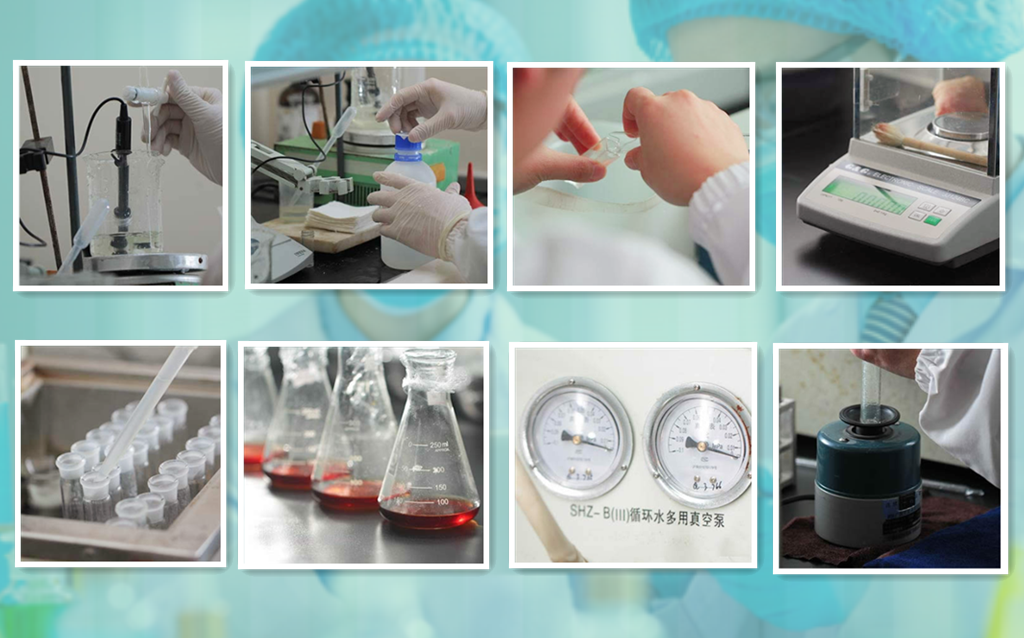
Production capacity
Eight automatic primary fermentation cylinders (60 m³),
2 pure culture tanks (10 m³), 2 pure culture tanks (5 m³),
4 pure culture tank (4 m³), 2 pure culture tanks (1 m³),
4 pure culture tanks (0.3 m³), 1 large air compressors,
1 spray/drying tower (1 ton/h),
4 air drying and fluidized bed drying equipment
1 production line of ultra concentrate liquid enzyme.
The annual production capacity of the Starzyme is more than 20,000 tons of liquid, powd
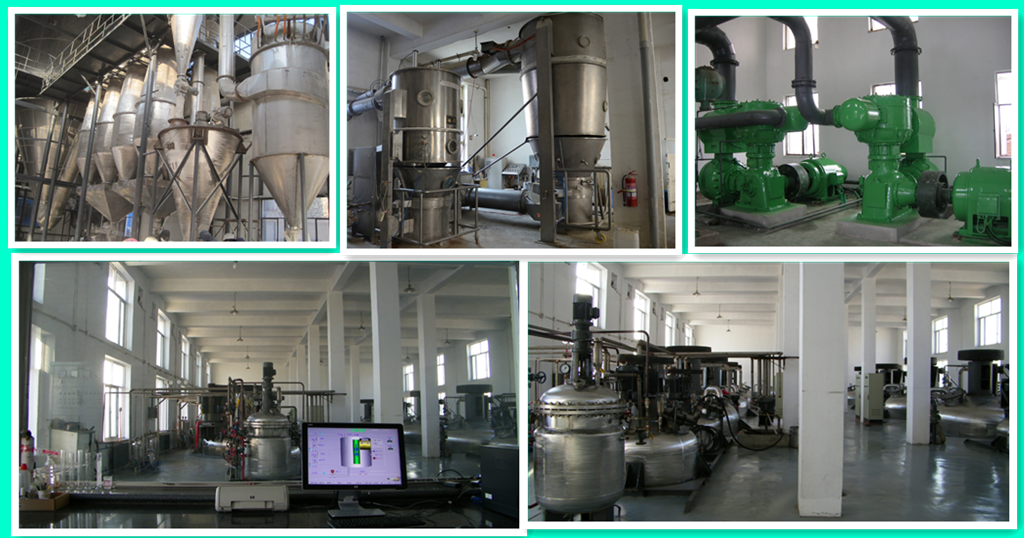
Thank you for your browsing, as a professional manufacturer of enzyme preparations and micro-ecological preparations, we are also very willing to help you . If you want to know the targeted solution, please leave a message in the message window below, we will assign a professional product consultant to contact you.

